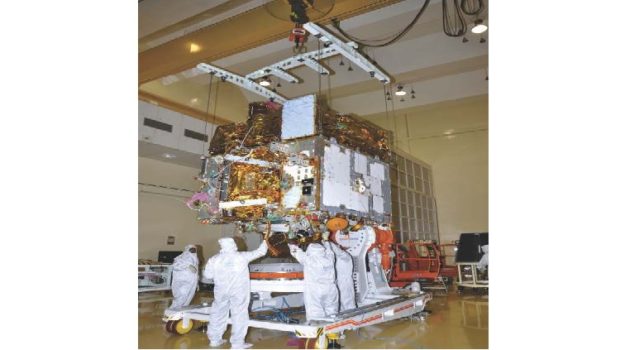
India’s multi-wavelength satellite AstroSat makes rare discovery: IUCAA
PTI, Aug 25, 2020, 12:32 PM IST

Pune: AstroSat, India’s first multi-wavelength satellite, has detected an extreme ultraviolet (UV) light from a galaxy which is 9.3 billion light-years away from Earth, the Inter-University Centre for Astronomy and Astrophysics (IUCAA) said on Monday.
A release from the Pune-based Inter-University Centre for Astronomy and Astrophysics said a global team led by IUCAA scientists have achieved the major breakthrough.
“India’s first multi-wavelength satellite, which has five unique X-ray and ultraviolet telescopes working in tandem, AstroSat, has detected extreme-UV light from a galaxy, called AUDFs01, 9.3 billion lightyears away from Earth,” said it said.
The discovery was made by an international team of astronomers led by Dr Kanak Saha, associate professor of astronomy at the IUCAA, and published on August 24 by ‘Nature Astronomy’, the release said.
This team comprised scientists from India, France, Switzerland, the USA, Japan and The Netherlands.
Saha and his team observed the galaxy, which is located in the Hubble Extreme Deep field, through AstroSat. These observations lasted for more than 28 hours in October 2016, the release stated.
But it took nearly two years since then to carefully analyse the data to ascertain that the emission is indeed from the galaxy. Since UV radiation is absorbed by the Earth’s atmosphere, it has to be observed from space, it said.
Earlier, NASA’s Hubble Space Telescope (HST), a significantly larger than UVIT (UV imaging telescope), did not detect any UV emission (with energy greater than 13.6 eV) from this galaxy because it is too faint, it said.
AstroSat/UVIT was able to achieve this unique feat because the background noise in the UVIT detector is much less than the ones on HST,” said the release quoting Saha.
Saha said they knew it would be an uphill task to convince the international community that UVIT has recorded extreme-UV emission from this galaxy when more powerful HST has not.
Dr Somak Raychaudhury, Director of IUCAA, said, “This is a very important clue to how the dark ages of the universe ended and there was light in the universe. We need to know when this started, but it has been very hard to find the earliest sources of light. I am very proud that my colleagues have made such an important discovery.”
Udayavani is now on Telegram. Click here to join our channel and stay updated with the latest news.
Top News
Related Articles More

Congress’ promise of Rs 400 per day national minimum wage is real ‘400 paar’: Jairam Ramesh

School bomb hoax: Security beefed up across Delhi

ATF price hiked marginally, commercial LPG rate reduced by Rs 19 per cylinder

‘Anupamaa’ actor Rupali Ganguly joins BJP

India flight tests missile-assisted torpedo release system
MUST WATCH
Latest Additions

Congress’ promise of Rs 400 per day national minimum wage is real ‘400 paar’: Jairam Ramesh

School bomb hoax: Security beefed up across Delhi

ATF price hiked marginally, commercial LPG rate reduced by Rs 19 per cylinder

Mayank getting injured in first game on comeback has to directly be on LSG leadership: Lee

Sleaze scandal probe: No question of protecting anyone, says Karnataka Home Minister
























